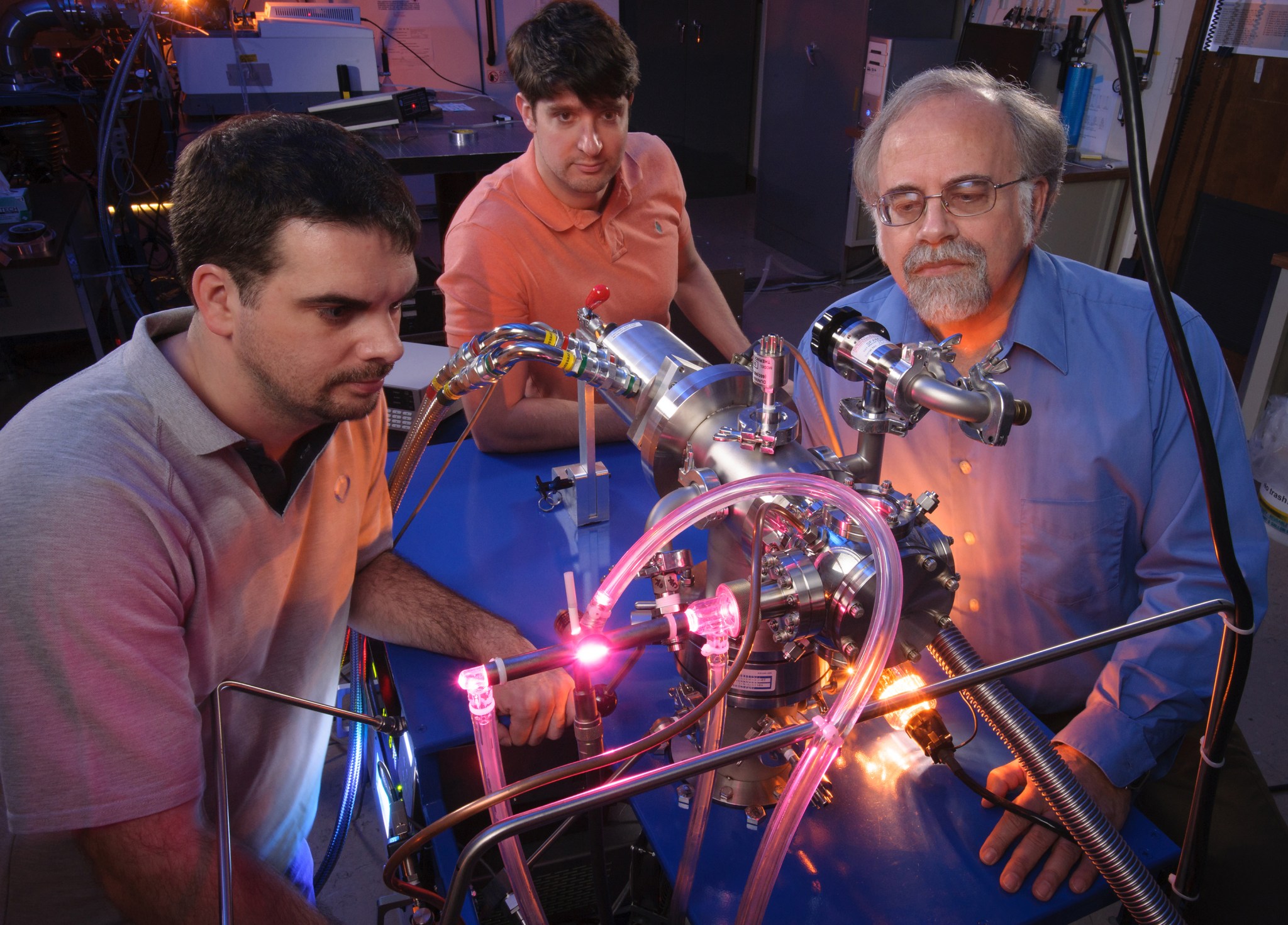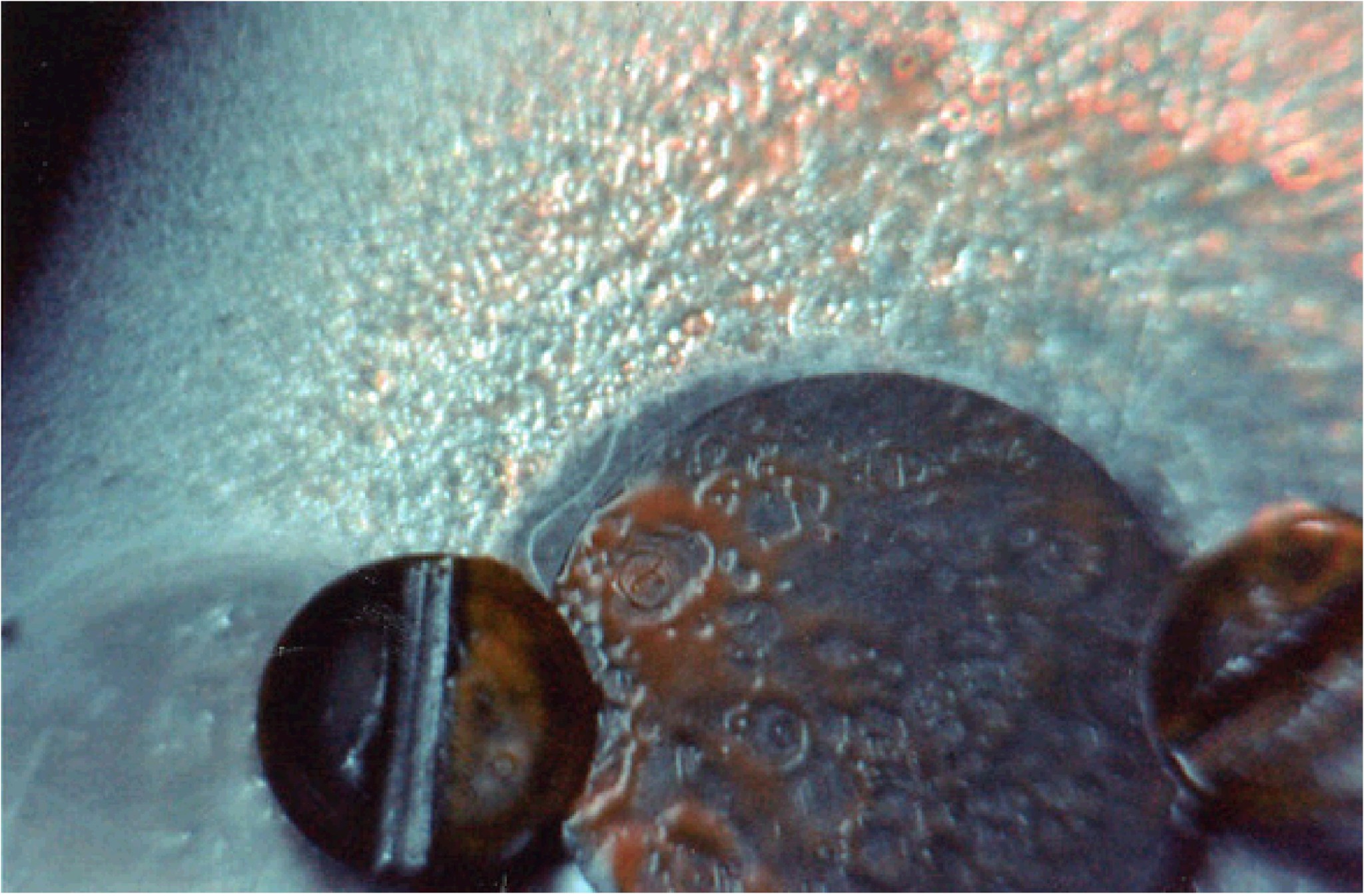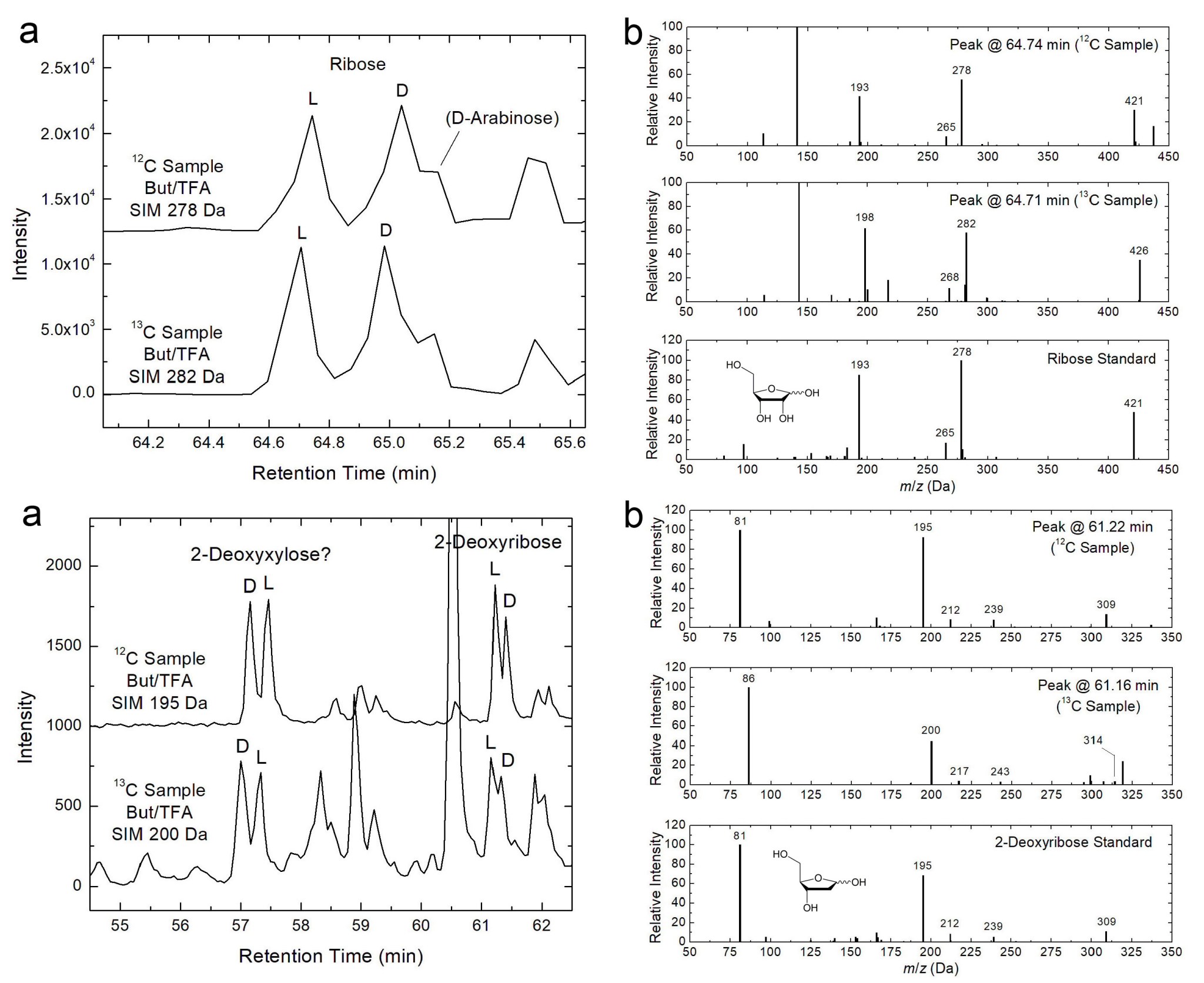Ices, Ice Irradiation, and Organics Laboratory for AstroBiology
(I3OLAB)
Members: Scott Sandford, Michel Nuevo
Objectives:
1. Identify, characterize, and study the evolution of the ices found in astrophysical environments, including ices in interstellar dense molecular clouds, protostellar disks, and outer Solar System bodies.
2. Study chemical processes that occur when ices and organics are exposed to ionizing radiation (high-energy photons and charged particles) and the subsequent formation of more complex organic materials with an emphasis on investigation of astrobiologically relevant materials.
3. Study extraterrestrial materials from comets and asteroids and support sample return missions.
Equipment:
3 vacuum chambers
- Cryovacuum systems (6 K and 10 K minimum temperatures, 10-8 Torr)
- Irradiation sources:
- VUV lamp (110–180 nm)
- Electron gun (1.5 keV, 500 µA)
- One system equipped with an FTIR spectrometer (0.64–22 µm, i.e. 15600–450 cm-1)
Stand-alone diagnostics
- IR (Infrared) microscope (1.28–16.67 µm, i.e. 7800–600 cm-1)
- Fluorescence UV microscope (400X)
- GC-MS (Gas Chromatograph–Mass Spectrometer, 50–650 Da, multiple available columns)
- HPLC (High-Performance Liquid Chromatograph, multiple available columns)
- Glass line (10-6 Torr background)
Use of other facilities
- Frequently share samples with collaborators with other analytical capabilities (TEM, nano-SIMS, noble gas mass spectrometry, etc.)
- C, N, O-XANES measurements of residues at the Advanced Light Source (ALS) in Berkeley, CA
- Irradiation of organic residues at the National Synchrotron Radiation Research Center (NSRRC) facility in Taiwan
Objective 1. Identify, characterize, and study the evolution of the ices found in astrophysical environments, including ices in interstellar dense molecular clouds, protostellar disks, and outer Solar System bodies.
Methodology:
- Produce various astrophysically relevant ice analogs in our cryovacuum systems
- Characterize them with IR spectroscopy (transmission + optical constants)
- Compare to mission data for detection
Application: Interpret astronomical data obtained by NASA and ESA missions and observatories: Spitzer, JWST, ISO, SOFIA, IRTF
Examples:
- Identification of molecular species on icy satellites (Jupiter’s moon Io)
- Identification of the primary components of interstellar and protostellar ices
- The identification of aliphatic organics in the diffuse interstellar medium
Objective 2a. Study chemical processes that occur when ices are exposed to ionizing radiation (high-energy photons and charged particles), and the subsequent formation of more complex organic materials with an emphasis on investigation of astrobiologically relevant materials.
Methodology:
- Irradiate astrophysically relevant ice analogs with UV photons or energetic electrons
- Characterize the ices, their chemical evolution, and the formation of new species during irradiation (IR spectroscopy)
- Warm-up samples to produce organics residues (characterization during warm-up using IR spectroscopy)
- Characterize resulting organics residue and identify molecular compositions (IR spectroscopy, GC-MS, HPLC, XANES spectroscopy)
Applications: Irradiation of even simple astrophysical ices leads to the production of large numbers of new compounds that can be compared to astronomical observations, compared to extraterrestrial materials, and that may have implications for astrobiology and the origin of life.
Examples: Abiotic production of:
- Amino acids (building blocks of proteins)
- Sugars and sugar-related compounds (building blocks of RNA and DNA, and compounds that mediate a host of biological functions)
- Amphiphiles (building blocks of membranes)
- Nucleobases (building blocks of RNA and DNA)
- Quinones (compounds that mediate a host of biological functions)
Objective 2b. Study chemical processes that occur when organic residues produced from the energetic processing of ices are exposed to further ionizing radiation (high-energy photons and charged particles), and the subsequent formation of very refractory, insoluble materials with an emphasis on investigation of materials relevant to meteoritic insoluble organic matter (IOM) and interplanetary dust particles (IDPs).
Methodology:
- Expose organic residues produced from astrophysically relevant ice analogs irradiated with UV photons or energetic electrons to additional high-energy radiation
- Characterize the changes in chemical composition during irradiation (IR spectroscopy)
- Measure changes in isotopic composition as a function of exposure to high-energy radiation (nano-SIMS)
Applications: Dust grains covered with ices and more complex organic compounds are believed to experience high doses of ionizing irradiation in the protosolar disk, resulting in the formation of a very refractory, insoluble material whose composition resembles that of meteoritic insoluble organic matter (IOM), interplanetary dust particles (IDPs), and the insoluble component of asteroidal materials from the Hayabusa2 and OSIRIS-REx sample return missions.
Examples: Comparison of laboratory samples and data with extraterrestrial materials such as:
- Meteoritic insoluble organic matter (IOM)
- Interplanetary dust particles (IDPs)
- Asteroidal samples returned by the Hayabusa2 mission in December 2020 and the OSIRIS-REx mission in September 2023
Objective 3. Study extraterrestrial materials from comets and asteroids and support sample return missions.
Methodology:
- Characterize organics in extraterrestrial samples (IR, GC-MS, HPLC, XANES)
- Characterize spacecraft components to assist with the assessment of potential contaminants in returned samples.
Applications: Study extraterrestrial organics to understand the processes and environments that formed them and in which they subsequently evolved.
Relation to missions: Used to interpret the organics found in extraterrestrial samples:
- Cosmic dust (collected in the stratosphere by NASA aircraft)
- Meteorites (many collected from Antarctica)
- Comet return samples (NASA Stardust mission)
- Asteroid return samples (NASA OSIRIS-REx mission; JAXA Hayabusa and Hayabusa2 missions)
Relation to missions: Characterize potential contaminants in samples returned from comets and asteroids
- Contaminants associated with spacecraft materials and operations
- Contaminants associated with sample recovery (for example, recovery site soils)
- Contaminants associated with curatorial activities
Find our publications here.






























